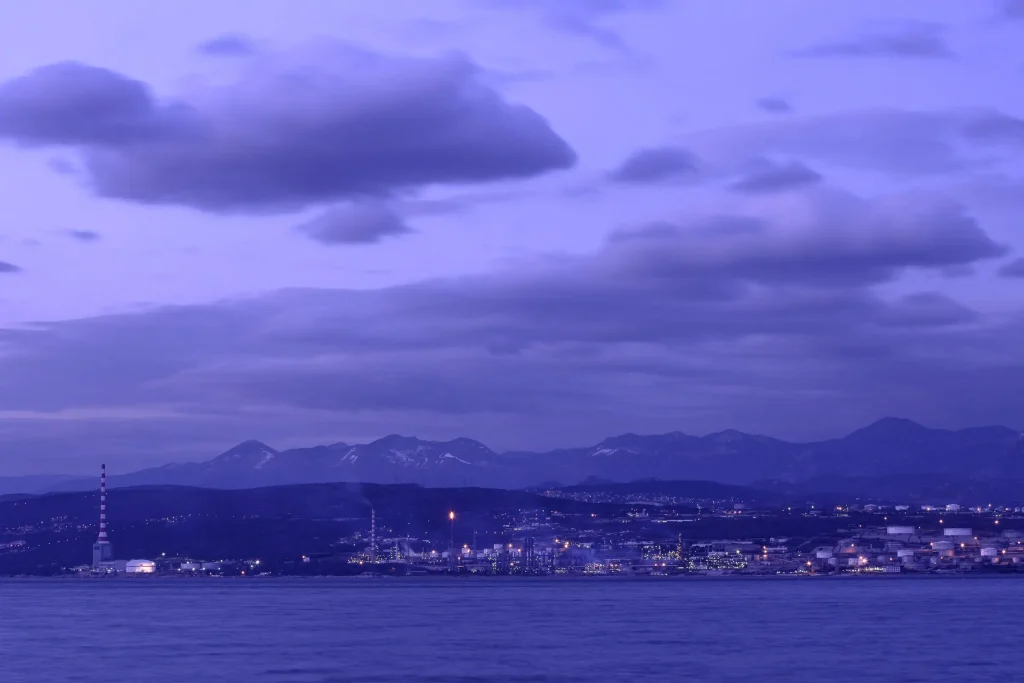As Novac/Vedran Marjanovic writes on the 1st of October, 2020, the Ministry of Economy and Sustainable Development has recently issued a positive decision on INA’s project to modernise the Rijeka refinery in the part related to the environmental impact assessment of that investment. This is another step towards the realisation of the largest investment for the Croatian economy in recent years, worth a massive four billion kuna, which, according to announcements from INA, will place the Rijeka Refinery among the most modern refineries in the world.
Behind the phrase ”the modernisation of the Rijeka refinery” is actually the construction of a coking complex with a port, storage and transport system.
”The main goals of the INA Rijeka Oil Refinery, which the planned second phase of modernisation, ie the implementation of the Heavy Residue Treatment Programme, seeks to achieve, are the higher production of low-sulfur gasoline and diesel fuels, the cessation of heavy fuel oil production, the reduction of the amount of total harmful emissions from the refinery site, and the production of fuel according to newer EU standards,” it was stated in the study that INA submitted to the Ministry of Economy in the procedure of obtaining that solution launched in May this year.
The final decision of the Management Board and the Supervisory Board of INA on the beginning of the second phase of the modernisation of the Rijeka refinery was made last December. “INA’s investment of four billion kuna is the most beautiful Christmas gift for the Croatian energy system.”
This euphoria is far from surprising because it is known that the modernisation of the refineries in Rijeka and Sisak was one of the obligations that MOL undertook by buying the first 25 percent of INA shares way back in 2003. This obligation was included in the famous inter-shareholder agreement from 2009.
From the documentation submitted by INA to the Ministry of Economy in the procedure of obtaining that decision on the impact of the modernisation of the Rijeka refinery on the environment, it is evident that INA addressed the then Ministry of Environmental Protection, Physical Planning and Construction back in 2009.
INA confirmed that obtaining this decision from the Ministry of Economy is one of the steps towards the construction of a plant for the treatment of heavy residues at the Rijeka refinery.
”Considering the fact that the project of construction of a plant for processing heavy residues implies obtaining a series of location and construction permits, these processes should be completed in the middle of next year,” announced INA. A warning from the decision of the Ministry of Economy and Sustainable Development is on the same track.
”This decision ceases to be valid if INA failts to submit a request for the issuance of a location permit within two years from the day of execution of the decision,” it was noted in the decision of the Ministry of Economy.
On the occasion of the final decisions of the Management Board and the Supervisory Board of INA on entering the 4 billion kuna investment in the Rijeka refinery, Croatia’s largest company announced that the processing plant should start operating in 2023. Although it should be understood that these announcements were made before the coronavirus crisis took hold, which stopped almost all investments in the country for at least three months this year.
For the latest travel info, bookmark our main travel info article, which is updated daily.
Read the Croatian Travel Update in your language – now available in 24 languages
Join the Total Croatia Travel INFO Viber community.








